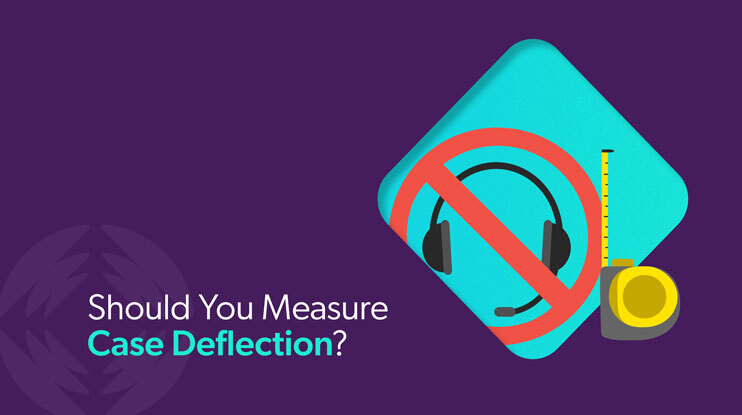Case deflection is a trendy yet fuzzy concept.
In theory, preventing cases in a measurable way is an attractive outcome for customer service and contact center teams.
But measuring case deflection metrics is difficult.
In fact, there seems to be a lot of misunderstanding around not only the definition of case deflection in general, but whether organizations should devote resources to implementing it at all.
What is Case Deflection?
From our discussions with folks from our customers’ CS organizations, we noticed that a popular definition of case deflection is a punctual deflection panel on a case submission form.
Still, other folks believe that case deflection is a metric calculated based on the number of user visits to a customer support site and how many cases get created as a result.
At a high level, case deflection is generally understood to mean avoiding the creation of a support case or ticket. Case deflection isn’t found in just one location, such as a submission form.
In fact, there are multiple areas where deflection can be optimized; here’s one potential case deflection flow:
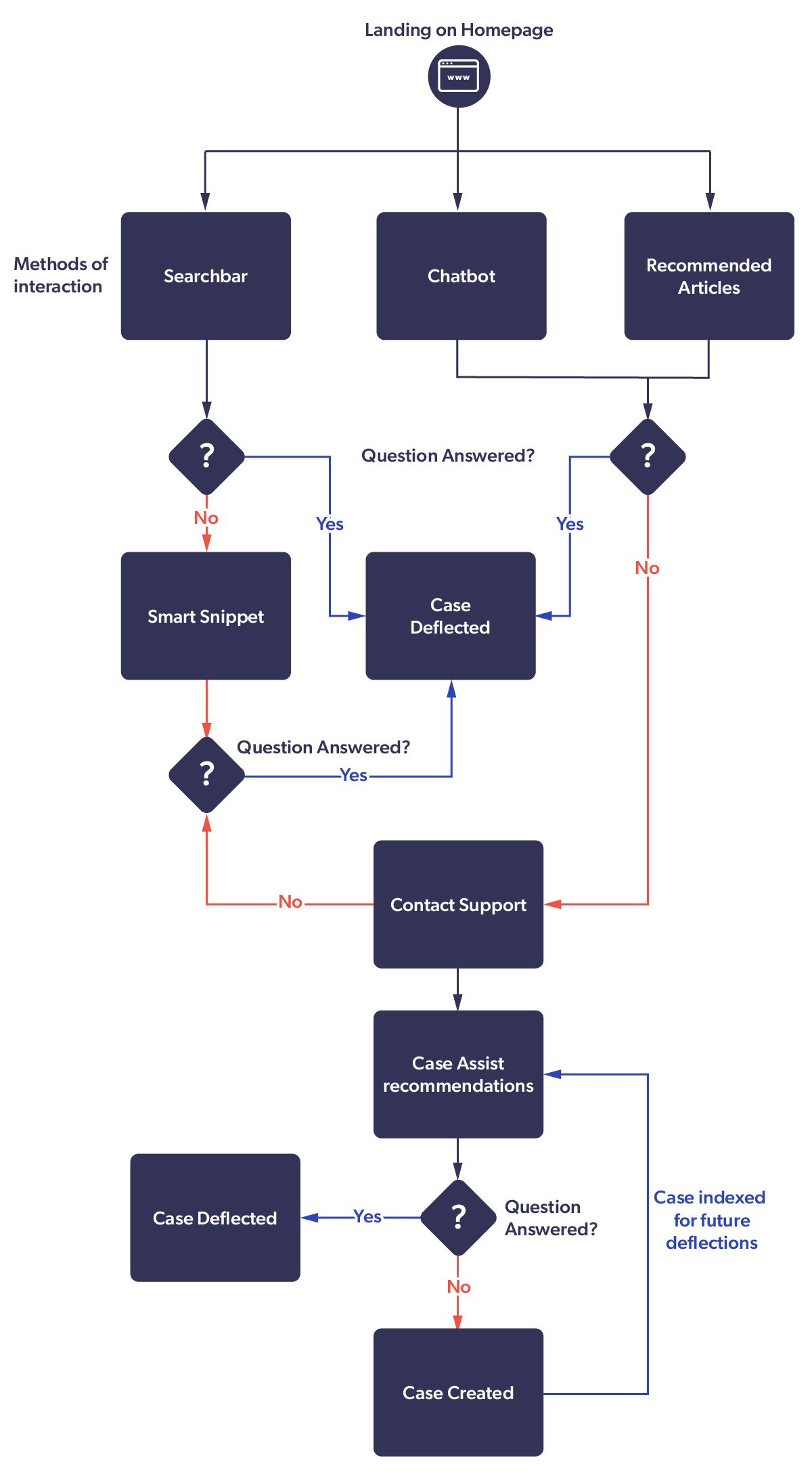
Herein lies the first and most common issue with case deflection: misalignment on what constitutes an actual deflection.
And this can lead to a misallocation of resources without seeing any value.
Can You Measure Case Deflection?
Short answer: Yes, but we recommend looking at this in a more holistic way.
When you consider self-service success as a whole, you’re not just trying to close out cases — you’re giving customers what they need, on the digital channel they prefer, increasing customer satisfaction, and growing engagement overall.
And what customers want might surprise you. Some people want or need to submit a case, one way or another. On the list of reasons why customers abandon their service experience, “it’s too hard to talk to an actual person” was a top response in a recent Coveo survey.
The best case deflection strategy in the world is no match for customer preference. Regardless of your strategy, access to a live agent should always be within easy reach.
What’s Your Company’s Case Deflection Story?
As you design your case deflection story, ask yourself: what journey(s) are you offering your customers? When a customer navigates to the customer support site, are you encouraging them to find content? Head over to the case creation page? Pick up the phone?
Keep in mind that when you make self-service easy, it encourages customers to adopt self-service. Think about where you can inject content to answer their question before a customer asks. But don’t make it too difficult to get live-agent help — sometimes that’s exactly what a customer wants.
Implicit vs. Explicit Case Deflection
Under the umbrella of case deflection strategy, you’ll find two high-level categories: implicit case deflection and explicit deflection. More than likely, you’ll offer some combination of both.
Here’s what both types of deflection entail:
Implicit Case Deflection
Implicit deflection happens when a customer interacts with self-service resources and their issue is resolved without needing to create a case. For example:
- Customer has a slow internet connection.
- They visit their internet service provider’s website and find a troubleshooting guide for slow internet speeds in the knowledge base.
- The customer follows the guide and successfully resolves the issue without needing to contact customer support.
Typically, this form of case deflection is more difficult to measure, though no less important.
Explicit Case Deflection
Explicit deflection happens when a customer starts the process of creating a support ticket or contacting customer service, but then abandons the process because they find the answer to their question themselves. For example:
- Customer needs to reset their password for a streaming service. They click Contact Support on the service’s website.
- They start filling out a form to submit a ticket.
- Before submitting the form, they see a Recommended Solutions section with a clear and easy-to-follow guide on resetting passwords that populate based on what they’re putting into the support form.
- The customer follows the guide and successfully resets their password without needing to contact support.
Of the two, this is the clearer, more measurable way to deflect cases.
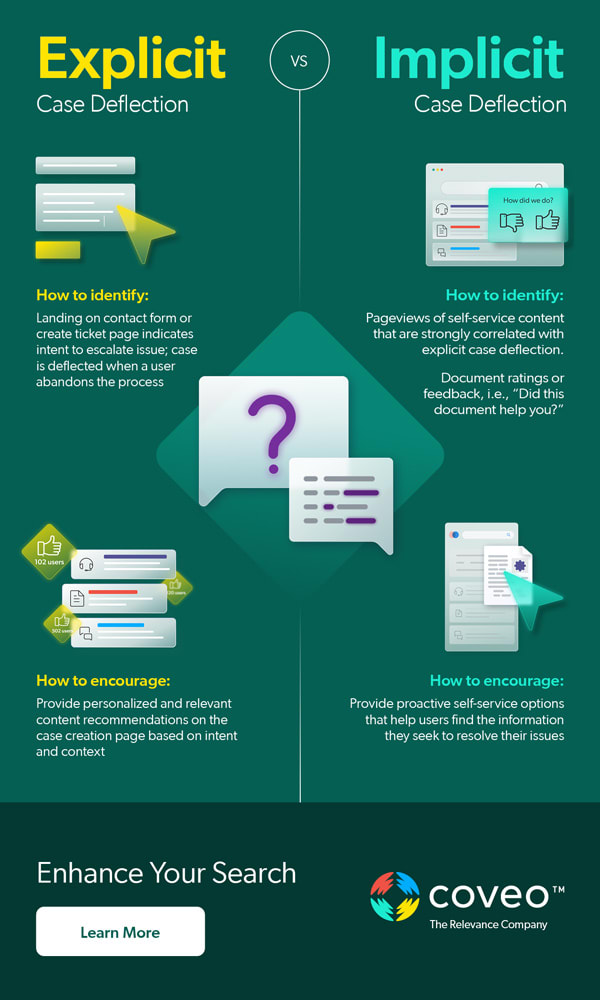
4 Case Deflection Optimization Tactics
Once you have a solid story around deflection, you can focus on optimizing the experience. Here are four tactics for improving your case deflection strategy and optimizing for customer self-service.
1. Offer a Unified Search Experience
Customers looking for answers will typically start with a search, whether it’s on your website or through their preferred search engine (i.e., Google). For the latter, you’ll want to ensure your content is optimized to be found by those search engines — on your own website, though, you have more control.
A common issue we see with homepage search is the location of the search bar. Is the search bar easy to find? Do searchers need to click on a magnifying glass icon to prompt the option for search?
Remember, you want to make asking a question easy, because that leads to the customer finding their answer faster. Having the search bar be front and center on the homepage implies that you want the customer to use it. Ideally, that search experience is backed by a unified search index, that brings in relevant content from various available sources.
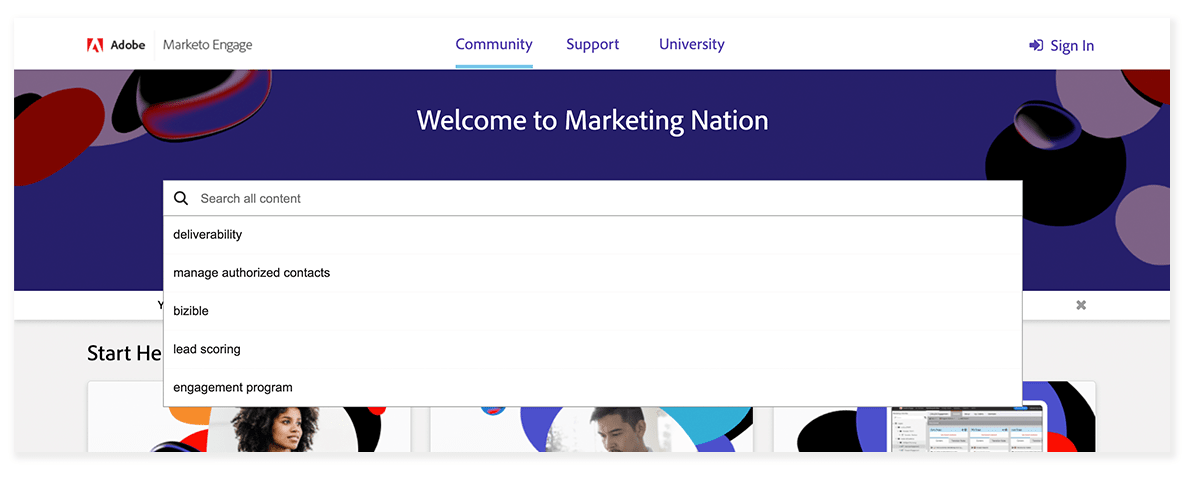
Unifying your content sources can boost case deflection, because customers can find their answers themselves. When they can’t do so, it becomes a problem.
In fact, 71% of Gen Z customers say they encounter problems online, such as poor site performance, lack of findability, and missing information. Of Gen Z’s biggest reasons for abandoning a service experience, not being able to find information on one’s own (56%) and having a different experience across digital touchpoints (36%) rank the highest.
Along with the search bar, you should also include suggested articles in the form of recommendations. Providing a static list of top articles is less effective than recommendations that optimize with the searcher’s behavior.
When powered by machine learning, recommendations offer answers to similar questions other searchers have asked. This can be a powerful tool when looking to offer a more personalized experience.
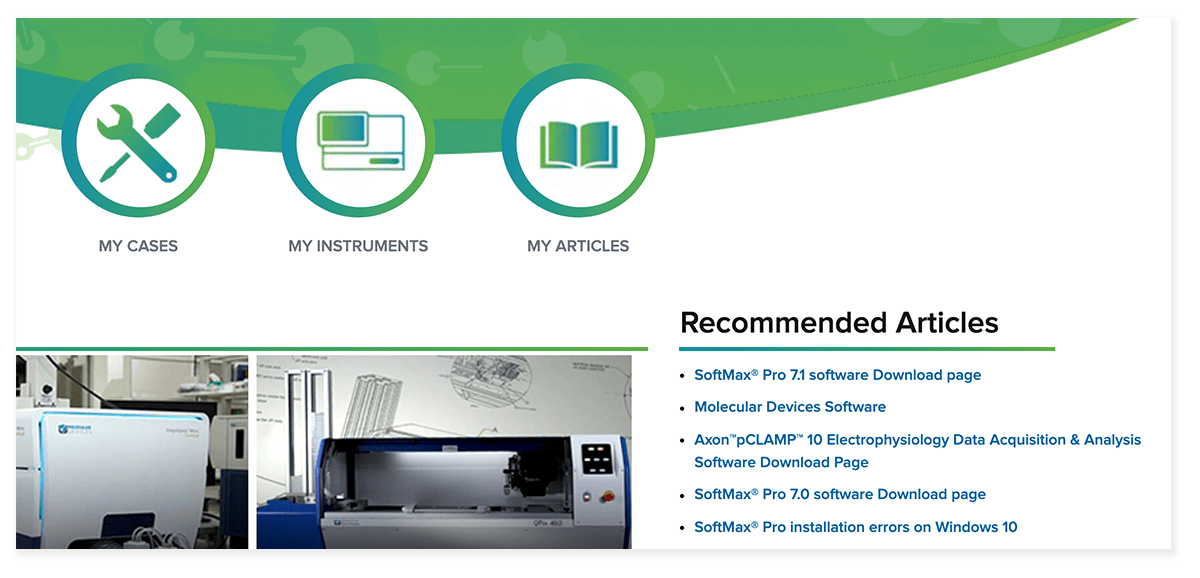
2. Consider Augmenting Your Chatbot With AI Search
Another case deflection method you can offer is a chatbot. Let’s take that same journey we previously saw: a customer landing on the homepage.
Instead of the customer using the prominently displayed search box, they see a chat notification on the bottom of the screen. They click on it, and begin asking their question to the unified-search-and-AI-enhanced bot behind the chat window.
Chatbots are designed to be an interaction point for a customer, answering low-level questions that don’t require a live agent’s touch. This can be a very powerful method of case deflection if implemented and configured properly. Many chatbots are rules-based, and can be enhanced with artificial intelligence.
Placed on the landing page of a support or community site, an AI-powered chatbot can offer curated interactions developed through drilling down into consumer thoughts. Ultimately, they provide a more refined search. Such a chatbot could help identify consumer intent, which is a major addition to your case deflection toolkit.
Some example case deflection metrics to track include:
- How many questions are answered with the chatbot?
- How many users discuss with the chatbot and never submit a case?
With chatbot assisted support, you can even ask if a searcher’s question or issue has been resolved by their conversation.
Relevant reading: Calculate Your ROI | See How Much AI Can Save You in Support Costs
3. Leverage Generative Answering or Smart Snippets
If we continue the journey of the customer who searched from the homepage, we can also provide additional potential deflection using either Generative Answering or Smart Snippets.
Generative artificial intelligence (GenAI or generative AI) can be transformative for an organization’s knowledge management (KM) strategy and, by extension, their case deflection strategy. GenAI enables customers to ask questions and receive instant, accurate answers in a human-like interaction. GenAI can also be used to fill in the gaps that lead to service failures, by automatically adjusting self-service and case deflection content to their levels of expertise or experience.
Let’s say you have a few knowledge base articles that contain pieces of the answer to a question that was asked. We want to provide that answer instantly without the user having to open the documents and piece together the answer themselves. This is where Generative Answering can come in handy, and pull together that answer, complete with citations for where that information came from.
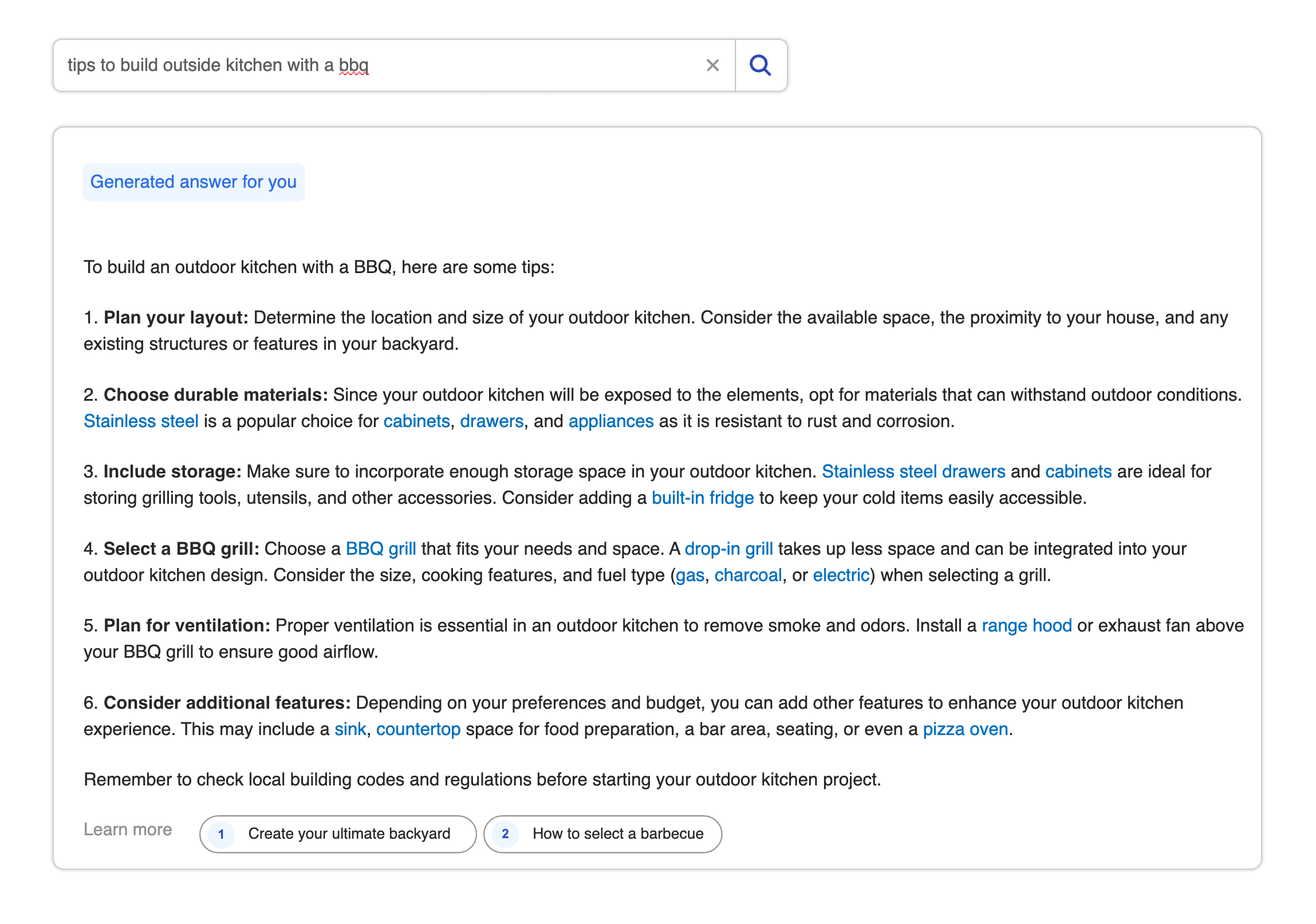
Example case deflection metrics to identify in this case include:
- How many searches led to displaying a generated answer?
- How many users say that the generated answer was helpful?
- How many users see a generated answer and never submit a case?
Or you can use Smart Snippets, which extracts just the specific text related to an answer, no generation necessary. This should look and feel a lot like when a question is asked on Google: the first result typically provides a link to the result but also a segment of the article directly related to the query.
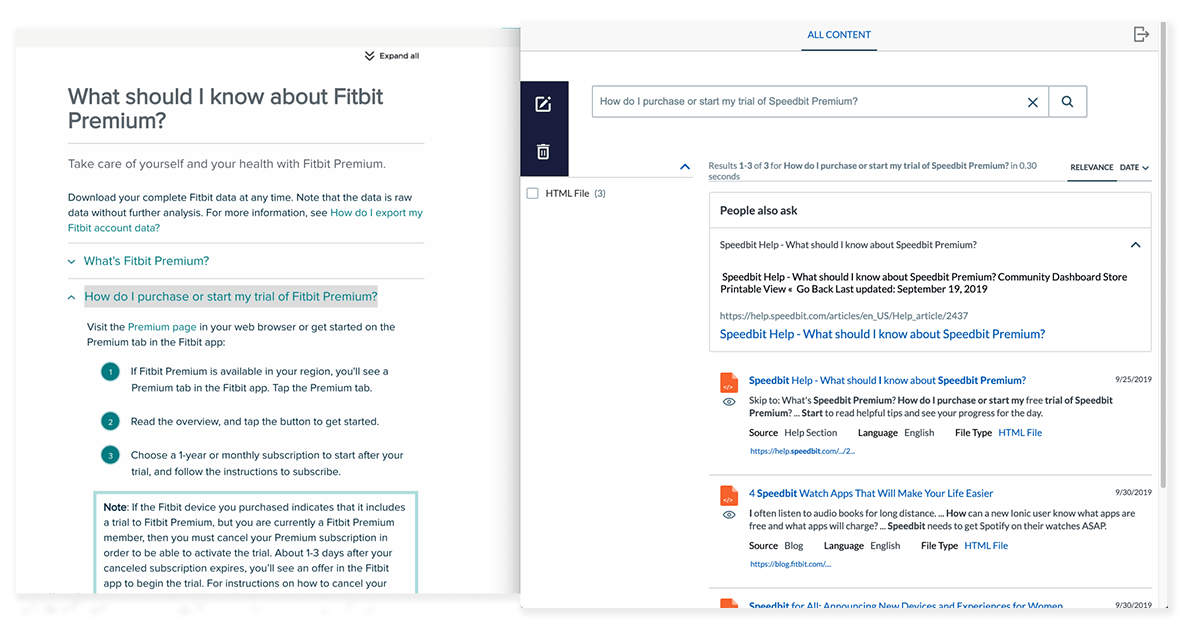
Example case deflection metrics to identify in this case include:
- How many searches led to displaying a smart snippet?
- How many users say that the snippet was helpful?
- How many users see a snippet and never submit a case?
Again, we are trying to reduce the effort the consumer needs to take to solve their problem; this is deflecting a potential case from being submitted!
Related Reading: Smart Snippets vs Generative Answering
4. Implement Case Assist
Even if a user goes straight to submitting a case form, you can offer solutions as they fill out the form with Case Assist. This API-based solution optimizes the case creation process, and can directly impact improving case deflection with two features: document suggestion and case classification.
Document suggestion uses machine learning to provide the most relevant content to customers as they fill out a case submission form, with the goal of deflecting the case entirely.
Case classification suggests a classification for the case as it is created, based on previous cases. While this feature exists mainly to improve case routing and case time to resolution, helping users accurately classify their case provides you with more structured information about your customer’s problem. That way, you can automatically display relevant content with document suggestions, thus boosting case deflection.
This would be an example of the “classic” form of case deflection: that is, how many users start filling out the form, but do not submit a case.
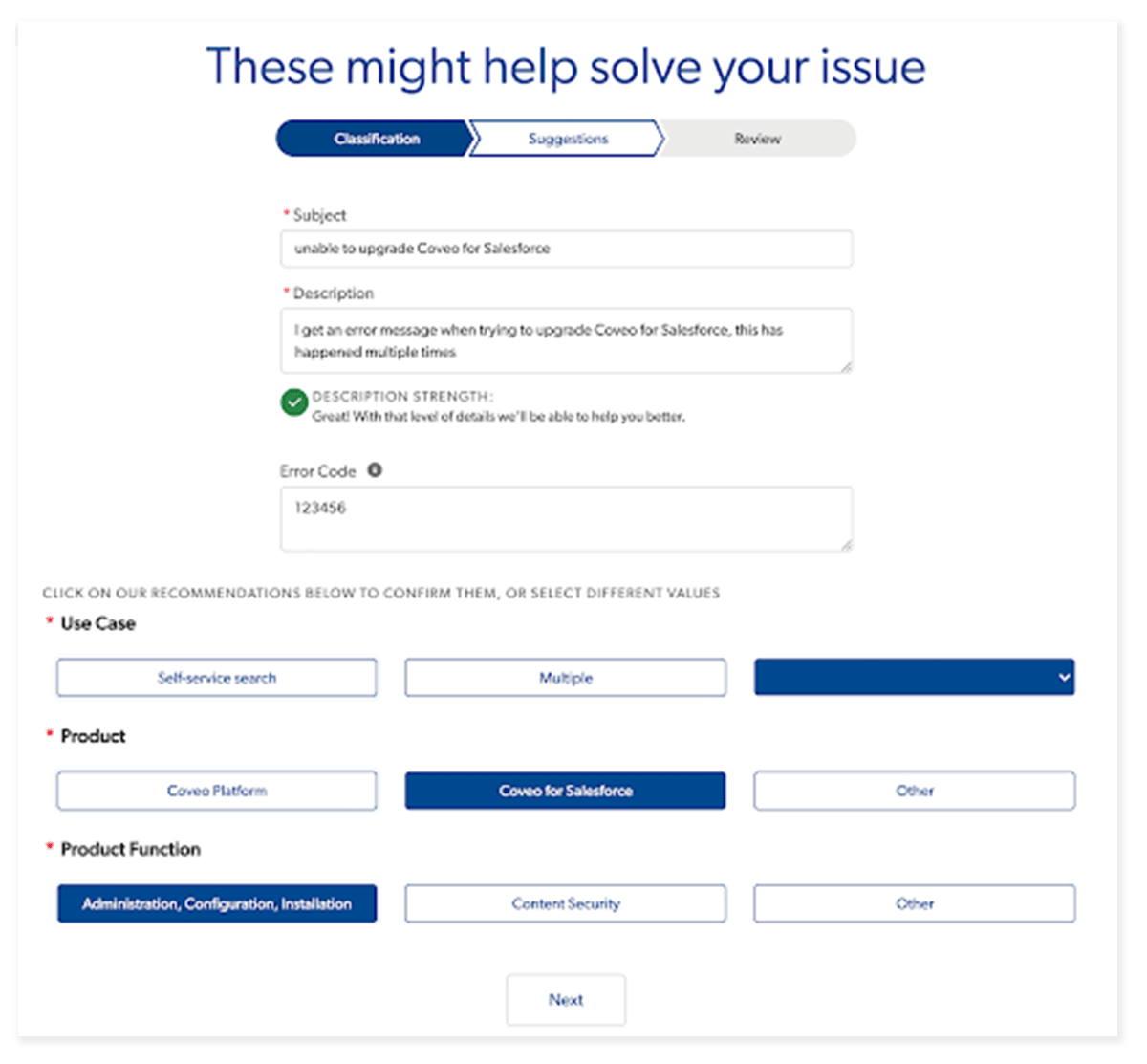
Worried About Hallucinations? Secure Your LLM
The strength of GenAI depends on your language learning model (LLM). As with any technology, LLMs are not without their challenges. Retrieval Augmented Generation (RAG) incorporates trusted knowledge sources when responding to a user query. This “grounds” the LLM’s response in factual data, improving accuracy and reducing the risk of hallucinations (made-up information).
RAG has various applications within the context of case deflection, including search, chatbots, and knowledge content generation.
One Coveo customer, Xero, has successfully increased case deflection using GenAI-powered answering. You can read the full case study here. In the meantime, here’s a snippet:
With the advent of GenAI, Piper is looking to change the game. Rather than wait for a customer to approach Xero, he wants to leverage their vast amount of data and AI to deliver answers even before customers ask. Working with partners like Coveo to leverage AI, Piper continued, has allowed Xero to focus on those they serve: people. And this push to answer questions before they’ve been asked isn’t meant to discourage. Piper says he wants customers to raise more questions, likely because customers can be a wellspring of feedback and innovation.“Every time someone asks a question, every time we solve an opportunity for someone, they become sticky on our platform,” Piper said. “They stay, and that’s a really great experience for us.”And now with Coveo’s Relevance Generative Answering, Xero has seen a 20% decrease in search sessions needing additional customer experience support since its launch in October 2023.
Case Deflection Isn’t A Number
As enticing as it might seem, you shouldn’t strive for 100% deflection rates. There will always be a new, unexplored customer issue that will have to be examined and resolved by human minds. Our research shows that across generations, people still want the option to interact with a live agent, regardless of how their self-service journey begins.
Should you measure case deflection? Yes. The question is how and why. Don’t get hung up on a generic case deflection percentage. Instead, your metrics should be a reflection of customer experience or satisfaction, rather than a vague and potentially inaccurate number.
Ultimately, there are a number of interaction points where we can deflect a case. Why and how you measure that deflection rate will depend on the kind of customer journey you want to nurture.
Dig Deeper
Do you ever wonder if focusing solely on case deflection is actually hurting your business? You might be onto something:

